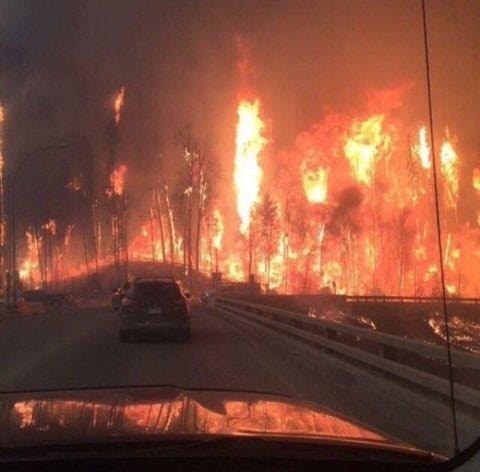There are terrifying pictures and video images coming out of the Fort McMurray area as a huge wildfire has forced the evacuation of over 80,000 people.
It's not just the scope of the destruction — entire neighbourhoods being destroyed by fire — but also the speed at which the fire has advanced towards, and into, the city itself.
Highways were jammed and cars were running out of gas on the streets during the largest evacuation in Alberta history. Some residents had no time to pack, escaping with family members and pets with only clothes on their back.
Though there isn't a city as large as Fort McMurray in the East Kootenays, officials with the Southeast Fire Centre and the Regional District of East Kootenay stress the importance of being prepared and having an evacuation plan.
The possibility of East Kootenay residents being evacuated from a wildfire isn't necessarily out of the question, considering it happened last year during a blaze out near Kragmont and Baynes Lake.
Granted, Kragmont is a much smaller scale than Fort McMurray, but it always helps to be prepared for the possibility, according to Travis Abbey, the Emergency Services Coordinator with the RDEK.
"I think it became pretty clear last night on any television channel, watching what's going on in Fort McMurray that I'd say most of those people probably didn't have an opportunity to take what they wanted to take with them," Abbey said.
"It came by surprise to them and there's no reason why we couldn't expect something similar to happen like that here under the right circumstances, so we're just trying to impress upon people the need to be prepared in advance."
According to an RDEK emergency preparedness document, there are three levels that go into publicly announcing evacuations.
• An evacuation alert is the first step, which advises residents of the potential need for evacuation. Any residents or households affected by an evacuation alert should be prepared to leave quickly and should gather personal supplies necessary for several days.
• An evacuation order is the second escalation, which dictates that all residents are required to leave the area.
• When the danger has passed, an evacuation order is rescinded, which allows residents to return to the affected area and their homes.
If there is an immediate danger to property or life due to a wildfire or an explosion, the evacuation alert may go directly to an evacuation order.
"The biggest thing is being aware of your surroundings for one, your physical surroundings, as far as your property goes, but also your neighbourhood and your access and egress routes from your neighbourhood," said Abbey.
"A bit of preplanning with your neighbours in advance helps. We're currently working with the community of Moyie giving them some advice on how to prepare themselves as a neighbourhood, because you just may not have the opportunity to have a whole lot of time to think about it."
Abbey also said that people should be self-resilient, meaning that if a sudden evacuation occurs, they can take care of themselves and have a stockpile of necessities such as extra gas, food and water, along with other items such as important papers (wills, birth certificates), appropriate prescription drugs, credit cards and cash.
Additionally, if under an evacuation alert and if time permits, there are things that people can do to prepare your home and property for an incoming wildfire.
Inside the home, shut all windows and doors, leaving them unlocked and move all flammable furniture the the centre of rooms away from windows and doors. Shut off gas meters or propane, turn off pilot lights as well as air conditioning.
Leave house lights on so fire fighters can see your house under smokey conditions.
Outside your house, gather up flammable times such as door mats, toys and trash cans and store them inside, move barbecues away from the house and connect garden hoses to spigots for use by firefighters.
Leave exterior lights on so your home is visible to firefighters in heavy smoke conditions or in darkness and leave a ladder, if you have one, so firefighters can access the roof, if needed.
However, before any imminent threats of a wildfire, property owners can do things like reducing pine needles, leaves and other small fuel. Keep a three-metre barrier of non-combustible material away from your house and trim any tree limbs that may overhang structures on your property.
Though it's only the month of May, wildfire season is here, according to Karlie Shaughnessey, a Fire Information officer with the Southeast Fire Centre.
"Wildfire season is definitely here already, it's earlier than normal," Shaughnessey said. "We've also been experiencing some record-breaking temperatures for the month of April and into May, so its really important that people living, especially near the forest land and and grassland areas, should take some precautions."
For more resources on protecting your home and property from wildfires, visit the FireSmart page.
